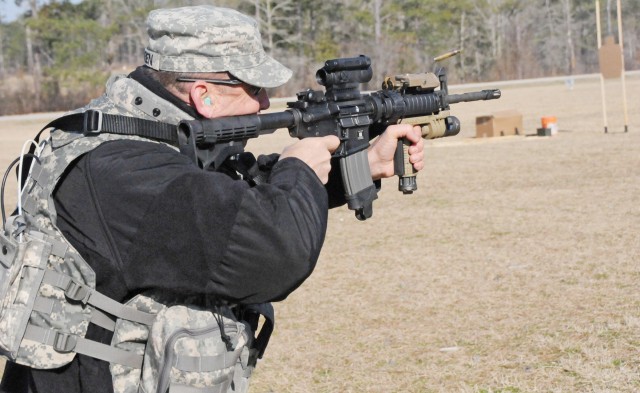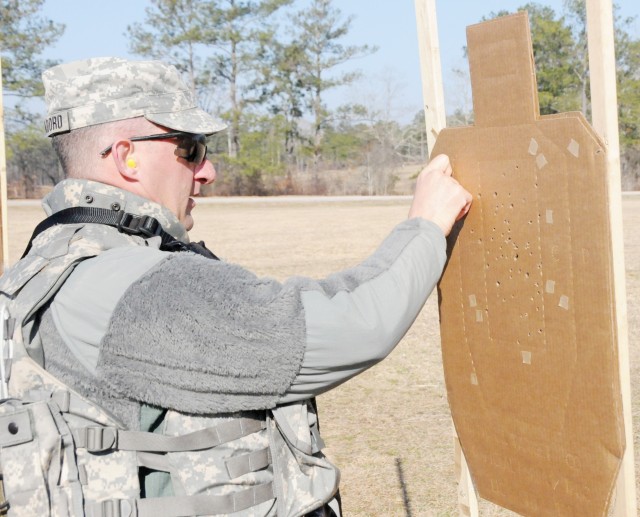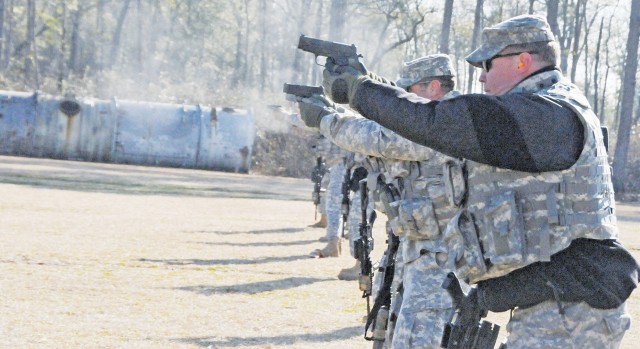FORT RUCKER, Ala. -- Six Aircraft Shoot Down Assessment Team members learned potentially life-saving skills during a first-time weapons training opportunity here March 1-5.
The six Soldiers garnered knowledge from the nation's best shooters as the Army Marksmanship Unit's service pistol team instructed the senior warrant officers on how to fire quickly and accurately and how to change weapons effectively.
CW5 Bobby Sebren, ASDAT chief, said the training may be necessary for his staff to do their jobs without becoming casualties themselves. ASDAT members investigate any issues related to aircraft shot down in war zones such as Iraq and Afghanistan.
ASDAT members deploy from Fort Rucker when needed and ride with infantry Soldiers to the downed aircraft sites. Sebren said the sites are often secure, but the unit still risks encounters with enemy forces when completing their tasks.
The training the team received will help in case enemies engage the unit during the investigation process, even with infantry Soldiers protecting them.
During the training, three Soldiers with the Army Marksmanship Unit, of Fort Benning, Ga., instructed the ASDAT Soldiers to fire 1,500 rifle rounds and 500 pistol rounds in a variety of situations and positions.
The targets were within 150 yards, simulating what the ASDAT members would likely encounter if they drew fire in a war zone, said Sgt. 1st Class Greg Wilson, AMU close quarters marksmanship noncommissioned officer-in-charge.
"We want them to shoot accurately and fast," he said, noting ASDAT members completed work with barricades in order to learn how "to use whatever cover they may have."
Wilson said his unit, which includes U.S. Olympians, has trained a lot of support organizations recently, a sign of the change in war tactics. He said in conventional warfare, Soldiers on the front line were the ones who worried with shooting, but in today's wars, "as soon as you leave the FOB (forward operating base), you're on the front line."
For that reason, ASDAT Soldiers believed the training provided them great benefits.
McCrary said in a previous position, he saw instances where the training would have been useful.
He added Soldiers only have so many bullets, and the training ensures ASDAT members will use weapons wisely and effectively.
CW4 James McDonough noted he learned techniques he never knew before, crediting the skill level of the AMU instructors for that.






Social Sharing